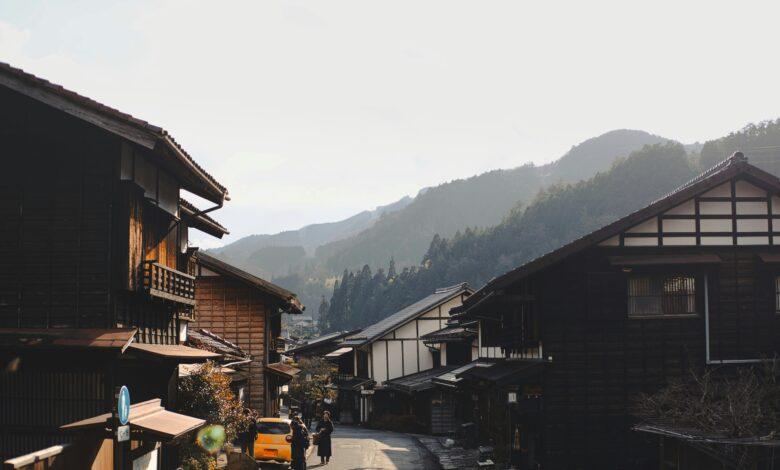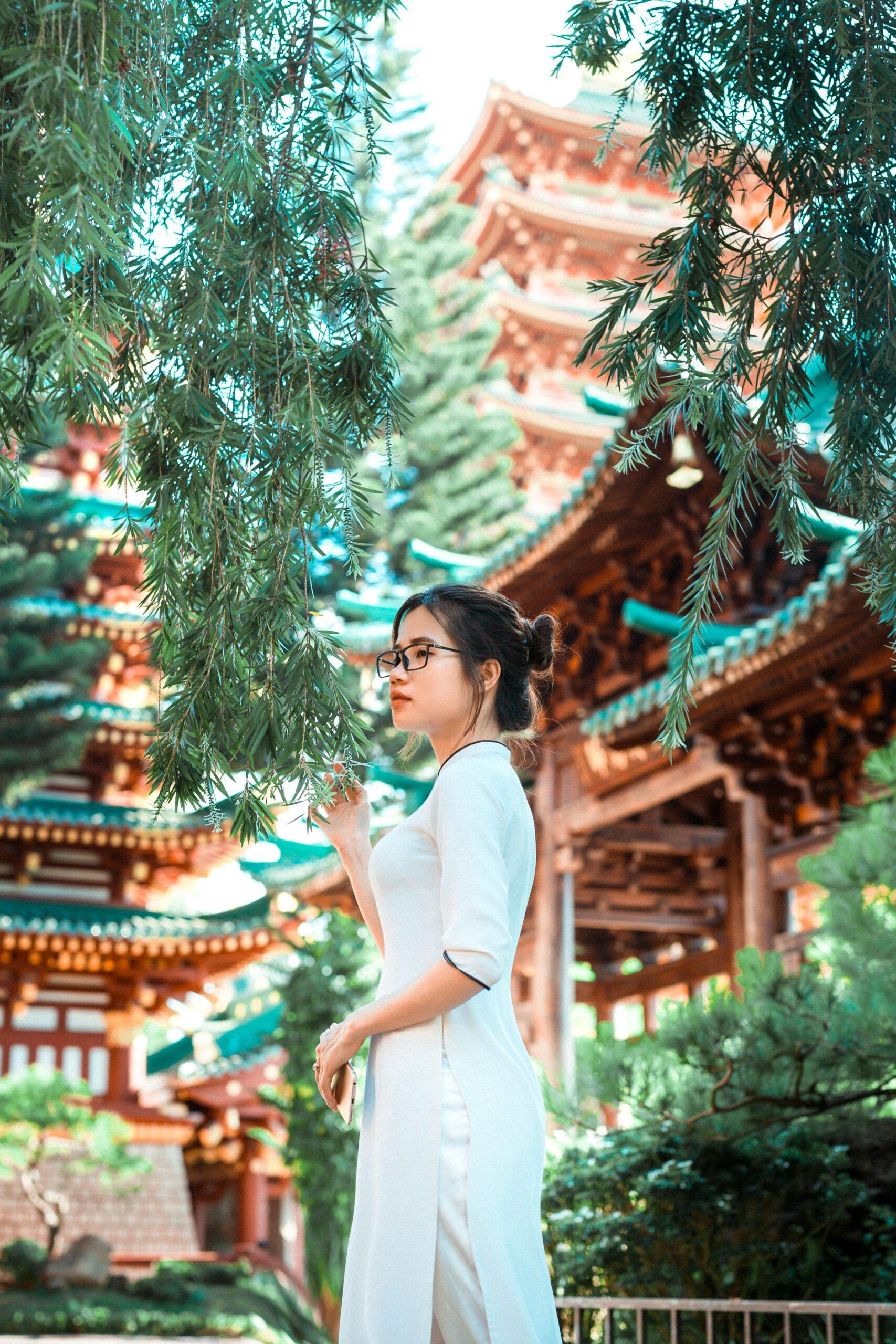Exploring the Diverse Neighborhoods of Tokyo, Japan 🏙️🌸🍣
Unveiling Tokyo's Multifaceted Charms: A Neighborhood Adventure from Akihabara to Asakusa

Introduction
Dive into the vibrant tapestry of Tokyo, Japan’s capital city, where modernity seamlessly intertwines with tradition. Tokyo’s diverse neighborhoods form a captivating urban mosaic, each with its unique personality and charm. Join us on an exploration of the multifaceted districts that make Tokyo a city like no other, unveiling the heart and soul of Japan’s dynamic capital.
Shibuya’s Famous Crossing and Vibrant Atmosphere
Nestled in the heart of Tokyo, Shibuya boasts an iconic pedestrian crossing that has become synonymous with the energetic pulse of the city. The Shibuya Crossing, often referred to as the “Scramble,” is a spectacle of organized chaos where thousands of people crisscross the intersection from all directions when the traffic lights change. The synchronized dance of pedestrians is a symbol of Tokyo’s efficient yet lively rhythm. Surrounded by neon lights and towering skyscrapers, the crossing is a visual feast, especially at night when the city comes alive with vibrant colors.
The atmosphere in Shibuya is electric, fueled by the energy of the youth culture that permeates the district. Trendsetting fashion, cutting-edge technology, and a constant buzz of activity contribute to Shibuya’s lively ambiance. The district is a mecca for fashion enthusiasts and trendsetters, with its myriad of shops, boutiques, and department stores showcasing the latest in Japanese street fashion. From quirky and eclectic to sleek and sophisticated, Shibuya’s fashion scene reflects the diversity and innovation of Tokyo’s youth culture.
Fashion, Entertainment, and Nightlife Scenes
Shibuya is not just a fashion haven; it’s also a thriving hub for entertainment and nightlife. The district is home to numerous entertainment venues, including theaters, cinemas, and live music clubs. Visitors can catch the latest blockbuster film or immerse themselves in the dynamic live music scene that showcases both local and international talent. The streets come alive after dark, with neon lights illuminating the way to a plethora of bars, clubs, and izakayas, offering a taste of Tokyo’s vibrant nightlife.
Exploring Unique Attractions: Hachiko Statue and Center Street
A visit to Shibuya would be incomplete without paying homage to the legendary Hachiko Statue. This faithful dog became a symbol of loyalty after faithfully waiting for his owner at Shibuya Station every day, even after the owner’s passing. The statue stands as a heartwarming testament to the bond between humans and their pets and is a popular meeting point for locals and tourists alike.
Center Street, also known as Center-gai, is a bustling pedestrian street that runs through the heart of Shibuya. Lined with a diverse array of shops, cafes, and boutiques, Center Street is a window into the eclectic tastes of Tokyo’s youth. From trendy streetwear to quirky accessories, this vibrant street captures the essence of Shibuya’s ever-evolving fashion and cultural scene. Exploring Center Street provides a unique glimpse into the pulse of modern Tokyo, making it a must-visit destination for those seeking an authentic experience in the iconic district.
Introduction to Asakusa’s Historical Significance
Asakusa, nestled on the eastern banks of the Sumida River in Tokyo, is a captivating district steeped in history and cultural richness. Its roots trace back to the Edo period, making it one of Tokyo’s oldest and most cherished neighborhoods. Asakusa has witnessed Tokyo’s evolution, preserving its traditional charm amid the modern cityscape. The area serves as a time capsule, allowing visitors to step back in time and experience the cultural tapestry of old Tokyo.
Description of Senso-ji Temple and Nakamise Shopping Street
Central to Asakusa’s historical allure is the iconic Senso-ji Temple, a Buddhist temple believed to be Tokyo’s oldest. Stepping through the thunder gate, known as Kaminarimon, visitors are greeted by the bustling Nakamise Shopping Street. This centuries-old market is a vibrant kaleidoscope of traditional stalls, offering an array of local snacks, crafts, and souvenirs. The Senso-ji complex itself is a testament to Japan’s religious heritage, with its main hall, pagoda, and various auxiliary shrines inviting exploration and contemplation.
Exploring Traditional Cultural Experiences in the District
Beyond the architectural marvels, Asakusa offers a plethora of traditional cultural experiences that transport visitors to a bygone era. Engage in the centuries-old practice of “omikuji,” where fortune-telling slips provide insights into one’s future. Participate in “sensu” (folding fan) or “origami” (paper folding) workshops, immersing yourself in Japanese craftsmanship. Visitors can also witness the grace of a traditional tea ceremony, experiencing the meticulous rituals that accompany this ancient art form.
Asakusa’s charm extends beyond Senso-ji, with cultural hubs like the Asakusa Culture and Tourist Information Center providing panoramic views of the district. Take a leisurely stroll along Sumida Park, especially during cherry blossom season, to revel in the picturesque beauty that complements Asakusa’s historical grandeur.
Akihabara: The Electric Town of Tech and Otaku Culture
Akihabara, located in the heart of Tokyo, has earned its reputation as the epicenter of tech and otaku culture. Commonly known as “Electric Town,” this vibrant district has become a pilgrimage site for technology enthusiasts, anime and manga lovers, and gaming aficionados from around the world.
Electronic Shops Galore
Akihabara’s streets are lined with an impressive array of electronic shops, each offering a treasure trove of cutting-edge gadgets and devices. From state-of-the-art cameras to the latest gaming consoles, tech enthusiasts can explore a myriad of options. Renowned retailers like Yodobashi Camera and Akihabara Radio Kaikan cater to the diverse needs of consumers, making Akihabara a haven for those seeking the latest innovations in consumer electronics.
Anime Stores: A Haven for Otaku
Anime enthusiasts find their nirvana in Akihabara’s numerous anime stores, boasting an extensive collection of manga, figurines, and other memorabilia. Shops like Animate and Mandarake are pilgrimage sites for fans seeking rare and exclusive items. The streets are adorned with colorful billboards featuring beloved anime characters, creating an immersive experience for otaku culture enthusiasts.
Themed Cafes and Entertainment
Akihabara takes the concept of immersive experiences a step further with its themed cafes. Visitors can dine in establishments dedicated to their favorite anime, manga, or video game franchises. Maid cafes, in particular, are a unique Akihabara phenomenon, where waitresses in maid costumes provide a charming and interactive dining experience. These cafes add a touch of fantasy to the tech-dominated landscape, creating an atmosphere that resonates with the vibrant otaku subculture.
Evolution of Akihabara’s Identity
Over the years, Akihabara has undergone a remarkable evolution in its identity. Initially recognized as a hub for electronics, it gradually embraced otaku culture, becoming a haven for anime, manga, and gaming enthusiasts. This transformation has turned Akihabara into a multifaceted destination, blending the worlds of technology and pop culture. Today, it stands as a symbol of Tokyo’s ability to seamlessly merge tradition and innovation, attracting visitors with its unique blend of cutting-edge technology and vibrant subcultures.

Harajuku: Where Fashion and Creativity Collide
Nestled in the heart of Tokyo, Harajuku has gained international acclaim for being a trendsetting district where fashion and creativity seamlessly intertwine. This vibrant neighborhood is a melting pot of diverse styles, attracting fashion enthusiasts and trendsetters from around the globe. Harajuku’s reputation as a fashion-forward district is synonymous with its eclectic blend of traditional Japanese aesthetics and avant-garde fashion trends.
Takeshita Street and its Unique Boutiques
Central to Harajuku’s allure is Takeshita Street, a bustling pedestrian thoroughfare that serves as the epicenter of the district’s unique fashion scene. Lined with an array of quirky boutiques, Takeshita Street is a paradise for those seeking one-of-a-kind fashion finds. The boutiques showcase an extraordinary mix of styles, ranging from kawaii (cute) and gothic to futuristic and vintage-inspired fashion. Each boutique on Takeshita Street exudes a distinct personality, contributing to the street’s vibrant and ever-changing landscape.
Exploring Takeshita Street is like stepping into a kaleidoscope of colors and styles, where fashion rebels express their individuality through clothing. From quirky accessories to avant-garde footwear, Takeshita Street offers a treasure trove of fashion delights that cater to every taste and preference. The street’s ever-evolving nature ensures that visitors are treated to the latest and most innovative fashion trends, making it a must-visit destination for fashion enthusiasts and trend-conscious individuals alike.
Creative and Artistic Elements in Harajuku
Beyond its reputation as a fashion mecca, Harajuku is a playground for the creatively inclined. The district serves as a canvas for artists, musicians, and performers who contribute to its unique atmosphere. Street art, murals, and installations add a dynamic layer to the visual landscape of Harajuku, turning the entire district into an open-air gallery of self-expression.
Moreover, Harajuku is a haven for those seeking artistic inspiration. Independent galleries and art spaces dot the neighborhood, showcasing the works of emerging artists pushing the boundaries of conventional art. Creativity permeates every corner of Harajuku, from the graffiti-adorned alleyways to the avant-garde fashion displays, creating an immersive experience for those who appreciate the intersection of fashion and art.
FAQs
Q. Is Tokyo safe for solo travelers?
A. Absolutely. Tokyo is known for its safety. Exercise standard precautions, and you’ll likely encounter a trouble-free visit.
Q. Which neighborhoods are best for nightlife in Tokyo?
A. Shibuya and Roppongi are renowned for their vibrant nightlife. Explore numerous bars, clubs, and entertainment options.
Q. Are English speakers common in Tokyo?
A. While not universally fluent, many Tokyoites understand basic English. Politeness and basic Japanese phrases can enhance communication.
Q. How can I navigate Tokyo’s public transportation system?
A. Tokyo boasts an efficient and extensive public transportation system. Purchase a rechargeable Suica or Pasmo card for seamless travel.
Q. When is the best time to visit Tokyo for cherry blossoms?
A. Late March to early April is the prime cherry blossom season. Ueno Park and Chidorigafuchi are popular spots for hanami, cherry blossom viewing.
Q. Are there vegetarian-friendly options in Tokyo?
A. Yes, many restaurants in Tokyo offer vegetarian-friendly dishes. Look for traditional Japanese options like vegetable sushi and tempura.
Conclusion
As our journey through Tokyo’s diverse neighborhoods comes to an end, we find ourselves immersed in the harmonious blend of tradition and innovation that defines this metropolis. From the bustling youth culture hub of Shibuya to the historic charm of Asakusa, the tech haven of Akihabara, and the avant-garde fashion scene in Harajuku, Tokyo stands as a testament to the coexistence of diverse elements within a cityscape. Each district contributes its unique thread to the intricate tapestry of Tokyo, creating an urban masterpiece that invites exploration and captures the essence of Japan’s rich cultural fabric.
UP NEXT
https://touristeyes.com/best-tourist-attractions-of-singapore/



Facebook Comments